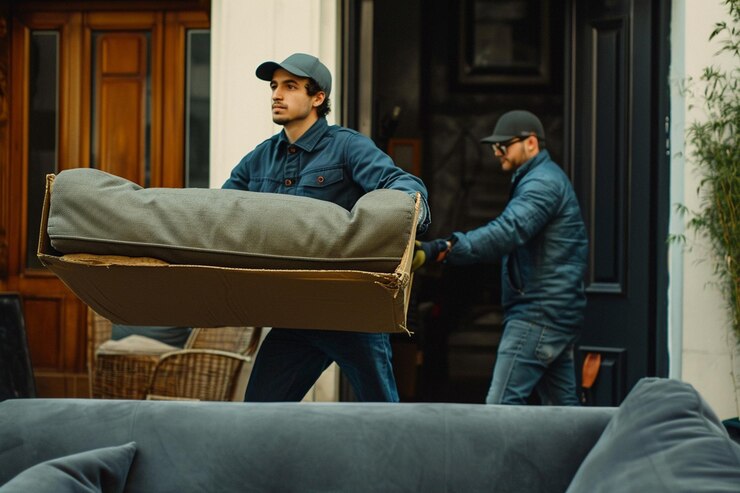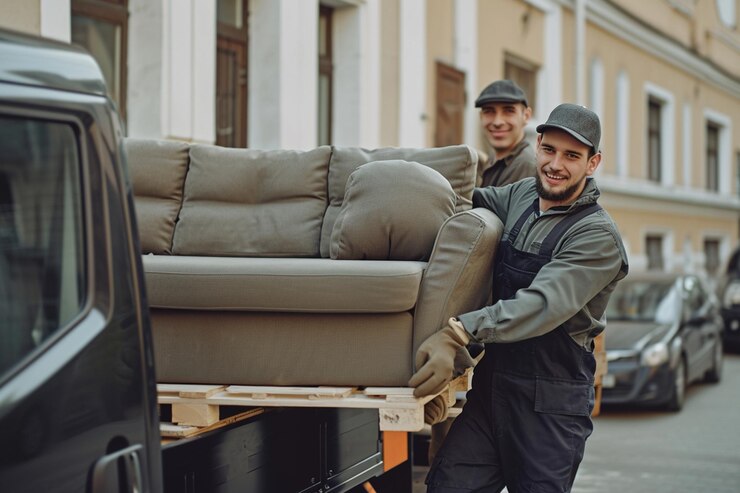Disassembling furniture before moving can make the process much easier and safer. It allows for more efficient use of space in the moving truck, reduces the risk of damage to both the furniture and your home, and makes heavy pieces easier to handle. Considering this step can save time, and effort, and potentially reduce moving costs.
Moving to a new house can be exciting, but the process of disassembling and packing furniture can be daunting. Whether you're relocating within Perth or moving interstate, knowing how to properly disassemble your furniture is crucial for a smooth and efficient move. Best Movers Packers Perth provides trusted house movers, this guide to help you navigate the disassembly process with ease.
Why Disassemble Furniture?
Disassembling furniture before a move serves several purposes. It makes the furniture easier to transport, reduces the risk of damage during transit, and allows for efficient use of space in the moving truck. Additionally, some furniture pieces simply cannot fit through doorways or narrow hallways in their assembled state.
Types of Furniture to Disassemble
When preparing for a move, understanding which pieces of furniture should be disassembled can help streamline the process and prevent damage. Here’s a breakdown of common furniture that can be taken apart and items that typically don’t require disassembly.
Common Furniture Pieces That Can Be Disassembled
1. Beds
- Bed frames and headboards are usually designed to be taken apart into smaller pieces for easier transport.
2. Tables
- Dining tables, coffee tables, and desks often have removable legs or tops that can be detached.
3. Shelving Units
- Bookcases and modular shelving units can often be broken down into individual shelves and supports.
4. Couches and Sofas
- Many modern couches have detachable sections, legs, or arms that make them easier to move.
5. Dressers and Wardrobes
- Large dressers and wardrobes can sometimes be disassembled to remove drawers or separate sections.
6. Entertainment Centers
- These can usually be taken apart into smaller components, such as shelves and the main frame.
Items That Might Not Require Disassembly
1. Chairs
- Most chairs, especially single-piece designs, don’t need to be disassembled as they are often compact enough to move as they are.
2. Small Side Tables and Nightstands
- These items are typically small and light enough to move without taking them apart.
3. Lamps
- Standard floor or table lamps usually don’t require disassembly, though it may be helpful to remove and pack lampshades separately.
4. Cabinets
- Unless extremely large, most cabinets can be moved without disassembly, though removing shelves or doors might make them lighter and easier to handle.
By knowing which furniture pieces to disassemble and which can be moved as is, you can plan your move more effectively, ensuring a smoother transition to your new home.
Tools You'll Need For Furniture Disassembly
Before you begin disassembling your furniture, gather the necessary tools:
- Screwdrivers: Both Phillips and flathead screwdrivers for removing screws.
- Allen wrench (Hex key): Often needed for furniture with bolts or screws that have hexagonal sockets.
- Adjustable wrench: For loosening nuts and bolts.
- Hammer: To gently tap stubborn parts loose.
- Ziploc bags or small containers: To store screws, bolts, and other small hardware pieces. Label each bag/container to indicate which piece of furniture it belongs to.
Having these tools handy will make the disassembly process much smoother.
General Disassembly Steps
While specific instructions may vary depending on the type of furniture, here are general steps to follow:
1. Start with Preparation
- Clear the area: Create a clear workspace around the furniture you're disassembling.
- Remove items: Take out any drawers, cushions, or removable parts first.
2. Remove Screws and Bolts
- Use appropriate tools: Use the screwdrivers, Allen wrench, or adjustable wrench as needed.
- Keep track of hardware: Place screws, bolts, and other hardware in labelled bags or containers.
3. Disassemble Large Parts
- Take apart sections: If possible, disassemble large sections like bed frames or tables into manageable parts.
- Wrap parts: Use furniture pads or blankets to protect disassembled parts during transport.
4. Handle Delicate Parts with Care
- Protect fragile items: Wrap glass shelves, mirrors, or other delicate components in bubble wrap or packing paper.
- Label fragile items: Mark fragile items to ensure they receive special care during the move.
5. Follow Manufacturer's Instructions
- Consult manuals: Refer to the furniture manufacturer's assembly/disassembly instructions if available.
- Online resources: Look for online guides or videos specific to your furniture type if instructions are not readily available.
6. Organise and Pack Efficiently
- Group parts together: Keep all hardware together with its corresponding furniture piece.
- Label parts: Clearly label each disassembled part or box to indicate which room it belongs to in your new home.
Tips for a Smooth Disassembly
- Take photos: Before disassembling complex furniture, take photos from different angles. These photos can serve as a reference when reassembling.
- Save manuals: Keep manuals and assembly instructions in a safe place to refer to during reassembly.
- Secure small parts: Tape small bags of hardware to larger furniture pieces to prevent them from getting lost.
Hiring Professional Help
If disassembling furniture seems overwhelming or you have delicate and valuable pieces, consider hiring professional furniture removalists. Companies like Best Movers Packers Perth have the expertise and tools to disassemble, pack, transport, and reassemble your furniture safely and efficiently. They can handle everything from small items to large, bulky pieces, ensuring a stress-free moving experience.
Conclusion
Disassembling furniture is a necessary step for a successful house move, whether you're staying local in Perth or moving interstate. By following these steps and tips from Best Movers Packers Perth, you can ensure your furniture is transported safely and efficiently to your new home. Properly disassembling and packing your furniture not only protects your belongings but also makes the moving process smoother and less stressful. If you prefer assistance or want to save time, consider enlisting the help of professional furniture removalists who specialise in disassembly and reassembly services.


